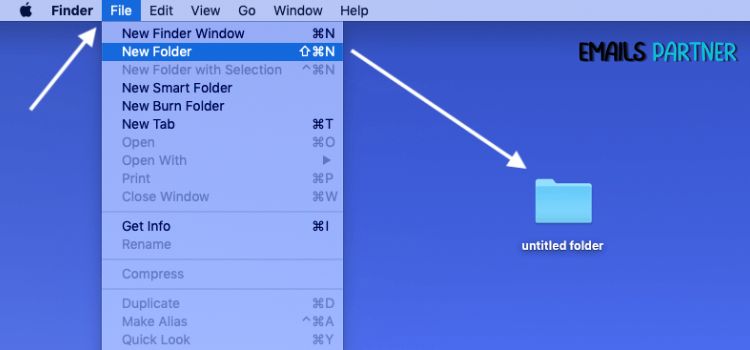Accurate OKR tracking is crucial for effective strategic planning, ensuring that organizations stay aligned with their goals. By defining clear objectives and measurable key results, OKR tracking offers a structured approach to monitor progress and make informed decisions. This methodology not only enhances performance monitoring and accountability but also promotes transparency and collaboration within teams. Embracing accurate OKR tracking can significantly improve an organization’s ability to achieve its strategic objectives and drive long-term success.
Definition of OKR Tracking
OKR Tracking refers to the systematic process of monitoring the progress of Objectives and Key Results (OKRs). OKRs are a popular framework used by organizations to set and achieve goals. This methodology involves defining clear, measurable objectives and the specific key results needed to achieve them.
Importance of OKR Tracking in Strategic Planning
Strategic planning involves setting long-term goals and determining the best approach to achieve them. Accurate OKR tracking is crucial in this process as it provides a clear picture of progress, highlights areas that need improvement, and ensures that all team members are aligned with the organization’s objectives.
Benefits of Accurate OKR Tracking
- Improved Goal Alignment: Ensures that all team members are working towards the same objectives.
- Enhanced Performance Monitoring: Provides a clear picture of progress and performance.
- Better Strategic Decision-Making: Offers reliable data for informed decision-making.
- Increased Accountability: Clearly defines responsibilities and expectations.
- Transparency Across Teams: Promotes openness and collaboration within the organization.
Key Principles
Objectives and Key Results (OKRs) Basics
OKRs are structured as follows:
- Objectives: Clear, actionable goals that an organization aims to achieve.
- Key Results: Specific, measurable outcomes that indicate progress towards the objective.
Principles of Effective OKR Tracking
- Clarity: Objectives and key results must be clear and understandable.
- Measurability: Key results should be quantifiable.
- Alignment: Ensure all OKRs align with the overall strategic goals.
- Transparency: Make OKRs visible to the entire organization.
- Flexibility: Be prepared to adjust OKRs as necessary.
Role of Accuracy in OKR Tracking
Accuracy in OKR tracking is essential to ensure that the data reflects the true progress towards objectives. Inaccurate tracking can lead to misguided decisions, wasted resources, and unmet goals.
Technical Specifications
Tools and Software for OKR Tracking
There are various tools available for OKR tracking, each offering unique features to suit different organizational needs. Popular OKR tracking tools include:
- Asana: Offers project management and OKR tracking features.
- Monday.com: Provides customizable OKR tracking templates.
- Betterworks: Specializes in performance management and OKR tracking.
Features of Advanced OKR Tracking Tools
Advanced OKR tracking tools often include features such as:
- Real-time progress updates: Keep track of progress as it happens.
- Customizable dashboards: Tailor the interface to meet specific needs.
- Integration capabilities: Connect with other business systems for seamless data flow.
- Automated reminders and notifications: Ensure timely updates and reviews.
Integration with Other Business Systems
Effective OKR tracking tools should integrate seamlessly with other business systems, such as CRM, HR, and project management software. This integration helps in consolidating data and provides a comprehensive view of organizational performance.
Applications
OKR Tracking in Large Enterprises
Large enterprises often have complex structures and multiple departments. OKR tracking helps in aligning goals across various levels and ensuring that all teams are working towards the same strategic objectives.
OKR Tracking for Startups
Startups can benefit from OKR tracking by maintaining focus on their core objectives and measuring progress effectively. This helps in scaling the business and achieving rapid growth.
OKR Tracking in Non-Profit Organizations
Non-profits can use OKR tracking to measure the impact of their programs and initiatives. Accurate tracking helps in demonstrating effectiveness to stakeholders and securing funding.
OKR Tracking in Educational Institutions
Educational institutions can implement OKR tracking to improve academic performance, streamline administrative processes, and enhance overall institutional effectiveness.
Benefits
Improved Goal Alignment
Accurate OKR tracking ensures that everyone in the organization understands and is working towards the same objectives. This alignment boosts productivity and fosters a collaborative environment.
Enhanced Performance Monitoring
By tracking key results, organizations can monitor performance in real-time and identify areas that need improvement. This proactive approach helps in addressing issues before they escalate.
Better Strategic Decision-Making
Accurate data from OKR tracking provides valuable insights for strategic decision-making. Leaders can make informed decisions based on reliable information, leading to better outcomes.
Increased Accountability
OKR tracking clearly defines responsibilities and expectations for each team member. This accountability ensures that everyone is aware of their role in achieving the organization’s objectives.
Transparency Across Teams
Transparency is a key benefit of OKR tracking. By making OKRs visible to the entire organization, teams can see how their work contributes to overall goals, promoting a sense of ownership and collaboration.
Challenges and Limitations
Common Pitfalls in OKR Tracking
- Lack of clarity: Ambiguous objectives and key results can lead to confusion.
- Overloading: Setting too many OKRs can overwhelm teams.
- Infrequent reviews: Irregular reviews can result in missed opportunities for course correction.
Overcoming Inaccuracies in OKR Tracking
- Regular reviews: Schedule frequent check-ins to monitor progress.
- Training: Provide training on how to set and track OKRs effectively.
- Feedback loops: Implement feedback mechanisms to ensure continuous improvement.
Balancing Flexibility and Rigor
While it is important to have a structured OKR tracking system, it is equally important to remain flexible. Organizations should be prepared to adjust OKRs in response to changing circumstances without compromising on accuracy.
Latest Innovations
AI and Machine Learning in OKR Tracking
Artificial intelligence and machine learning are revolutionizing OKR tracking by providing predictive analytics, automated insights, and personalized recommendations.
Real-time OKR Tracking Systems
Real-time tracking systems offer instant updates on progress, enabling organizations to make timely adjustments and stay on track towards their objectives.
Customizable OKR Dashboards
Customizable dashboards allow organizations to tailor the OKR tracking interface to meet their specific needs, providing a more intuitive and efficient tracking experience.
Comparative Analysis
OKR Tracking vs. KPI Tracking
- Focus: OKRs focus on ambitious, qualitative goals while KPIs are quantitative measures of performance.
- Flexibility: OKRs are more flexible and adaptable compared to KPIs.
- Implementation: OKRs often require a cultural shift, whereas KPIs are typically integrated into existing processes.
OKR Tracking vs. Traditional Goal Setting
- Clarity: OKRs provide clear, measurable outcomes while traditional goal setting can be vague.
- Alignment: OKRs align with strategic goals across the organization, unlike traditional goal setting which may be more siloed.
- Frequency of Review: OKRs are reviewed regularly, promoting continuous improvement, whereas traditional goals may be set annually without regular check-ins.
User Guides or Tutorials
How to Set Up an OKR Tracking System
- Define Objectives: Set clear, actionable goals.
- Identify Key Results: Determine measurable outcomes to track progress.
- Choose a Tracking Tool: Select an OKR tracking tool that meets your needs.
- Implement the System: Set up the tool and input your OKRs.
- Regularly Review and Update: Schedule regular check-ins to monitor progress and make necessary adjustments.
Best Practices for OKR Tracking
- Set ambitious but achievable goals: Challenge your team without setting them up for failure.
- Ensure clarity and measurability: Objectives and key results should be clear and quantifiable.
- Promote transparency: Make OKRs visible to the entire organization.
- Encourage feedback: Create a culture of continuous improvement by encouraging feedback.
Tips for Maintaining Accurate OKR Tracking
- Regular check-ins: Schedule frequent reviews to ensure accuracy.
- Use reliable tools: Invest in quality OKR tracking software.
- Provide training: Ensure that all team members understand how to set and track OKRs.
Conclusion
Accurate OKR tracking is critical for effective strategic planning. It ensures goal alignment, enhances performance monitoring, aids in strategic decision-making, increases accountability, and promotes transparency.
Investing in accurate OKR tracking can significantly improve an organization’s ability to achieve its strategic objectives. By using the right tools and practices, organizations can overcome challenges and reap the benefits of this powerful goal-setting framework.
To achieve success, start by defining clear objectives, identifying measurable key results, and selecting an appropriate tracking tool. Regularly review and adjust your OKRs to stay on track and continuously improve.



